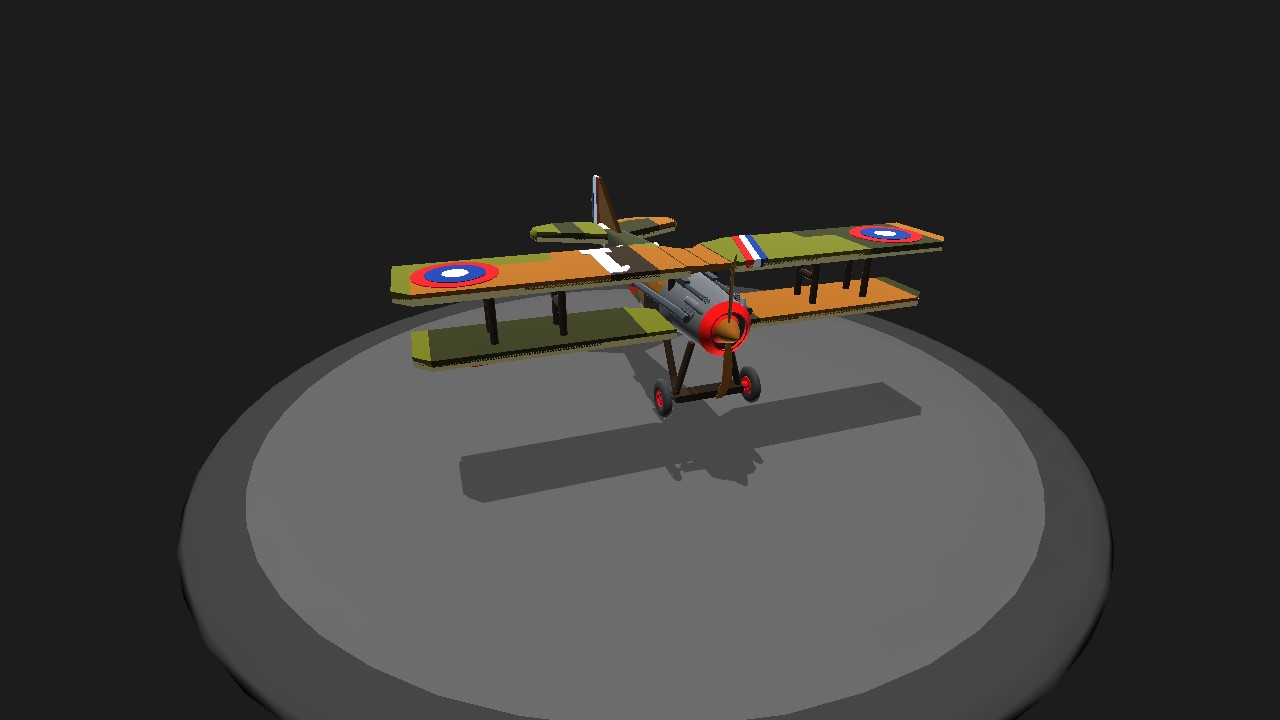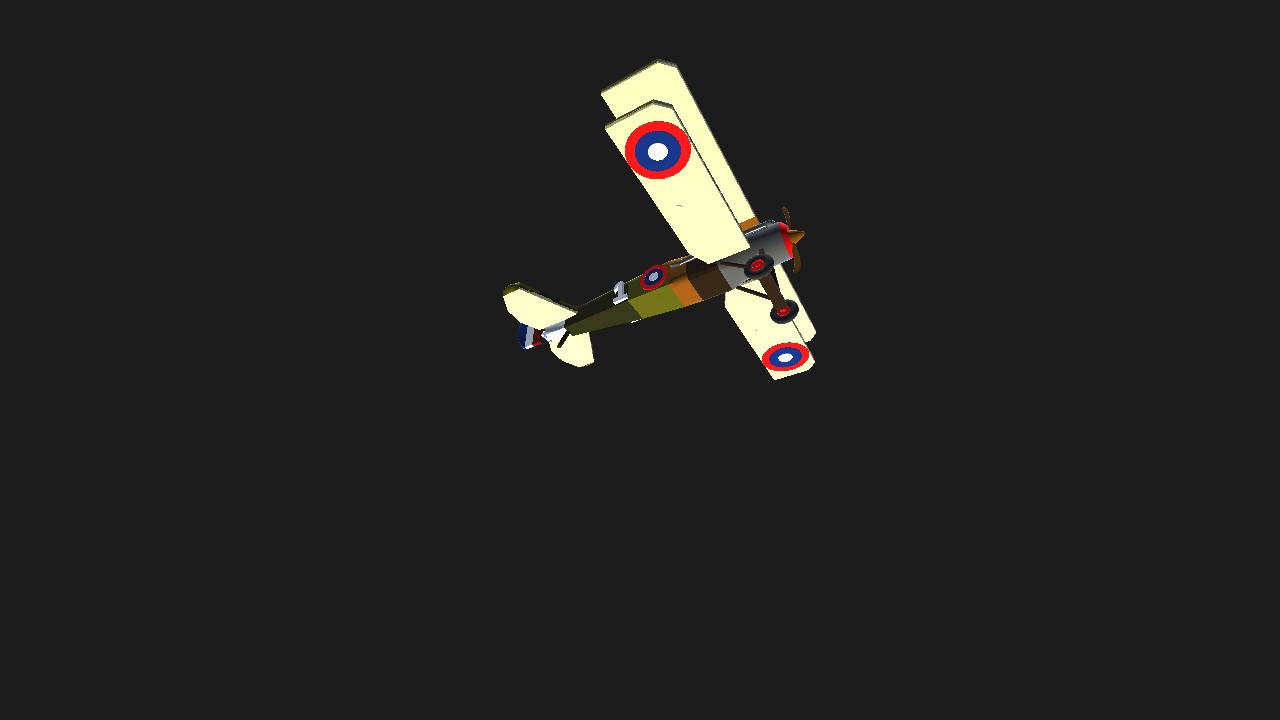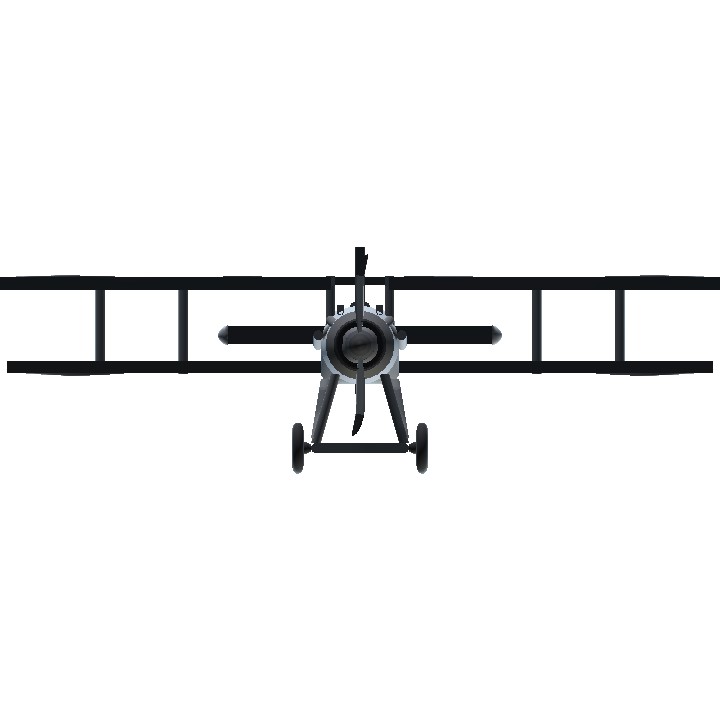I finally fixed the Spad XIII (@BogdanX was right it was the wing designs.)
The SPAD S.VII was a single-seat fighter aircraft powered by a 150 horsepower (110 kW) Hispano-Suiza 8A water cooled V-8 engine and armed with a single synchronised Vickers machine gun. It demonstrated excellent performance for the time, and entered service with the French Aéronautique Militaire in August 1916.[3] By early 1917, however it had been surpassed by the latest German fighters, leading French flying ace Georges Guynemer to lobby for an improved version telling the SPAD designer Louis Béchereau that "The 150 hp SPAD is not a match for the Halberstadt ... More speed is needed."[4] An initial solution was to increase the compression ratio of the Hispano-Suiza engine, increasing its power to 180 hp (130 kW), which gave significantly improved performance, allowing the SPAD S.VII to remain competitive,[5] but Hispano-Suiza were developing a geared version of the 8A engine, which would produce greater power, and this engine was chosen by Béchereau for two new fighter aircraft. First to fly was the S.XII, armed with a 37 mm cannon firing through the propeller shaft. This saw limited use, but was followed into production by the more conventionally armed S.XIII.[6]
The S.XIII was of similar layout to the S.VII, i.e. a single engined biplane [nb 1] of mainly wooden construction with fabric covering,[8] but was generally larger and heavier. Armament was two Vickers machine guns with 400 rounds per gun replacing the single gun of the earlier aircraft.[9] Powerplant was a geared Hispano-Suiza engine, at first a 8Ba giving 200 hp (150 kW),[9] but in later aircraft a high-compression 8Bc or 8Be delivering 220 hp (160 kW).[10] The sum of these improvements was a notable improvement in flight and combat performance. It was faster than its main contemporaries, the British Sopwith Camel and the German Fokker D.VII, and its relatively higher power-to-weight ratio gave it a good rate of climb. The SPAD was renowned for its speed and strength in a dive, although the maneuverability of the type was relatively poor and the aircraft was difficult to control at low speeds: needing to be landed with power on, unlike contemporary fighters like the Royal Aircraft Factory SE.5 which could be landed with power off.[7]
While giving the Spad XIII outstanding performance, the geared engines proved to be unreliable, suffering from poor lubrication and vibration. This significantly and severely affected serviceability, with it being stated in November 1917, that the Spad S.XIII was "incapable of giving dependable service". Even in April 1918, an official report stated that two-thirds of the 200 hp SPADs were out of use at any one time due to engine problems.[11] At least one US observer believed at the time that the French were giving the US SPAD XIII squadrons lower quality engines from their least favored manufacturers while keeping the best for themselves.[citation needed] The problems with the engine were considered a worthy price to pay for the improved performance, however,[12] and as time went by, improved build quality and changes to the engine design led to increased serviceability.[13]
In the last few months of the war, fearing a shortage of Vickers guns, US Spad XIII squadrons began replacing their Vickers .303 machine guns with .30/06-calibre Marlin M1917 and M1918 aircraft machine guns.[14][15] By the end of the war about one half of the aircraft in US service had been converted.
Edward Vernon Rickenbacker (October 8, 1890 – July 23, 1973) was an American fighter ace in World War I and Medal of Honor recipient. With 26 aerial victories, he was America's most successful fighter ace in the war. He was also a race car driver and automotive designer, a government consultant in military matters and a pioneer in air transportation, particularly as the longtime head of Eastern Air Lines.
Specifications
General Characteristics
- Predecessor Spad S.XIII of Eddie V. Rickenbacker
- Created On Mac
- Wingspan 30.1ft (9.2m)
- Length 26.1ft (8.0m)
- Height 9.5ft (2.9m)
- Empty Weight 5,278lbs (2,394kg)
- Loaded Weight 6,189lbs (2,807kg)
Performance
- Horse Power/Weight Ratio 0.161
- Wing Loading 10.2lbs/ft2 (49.8kg/m2)
- Wing Area 606.8ft2 (56.4m2)
- Drag Points 6604
Parts
- Number of Parts 198
- Control Surfaces 24
- Performance Cost 625







Really nice aircraft you're building! Its really nice to see others make WWI planes, maybe ill be as good as you somebday!
Thanks @Hellohi